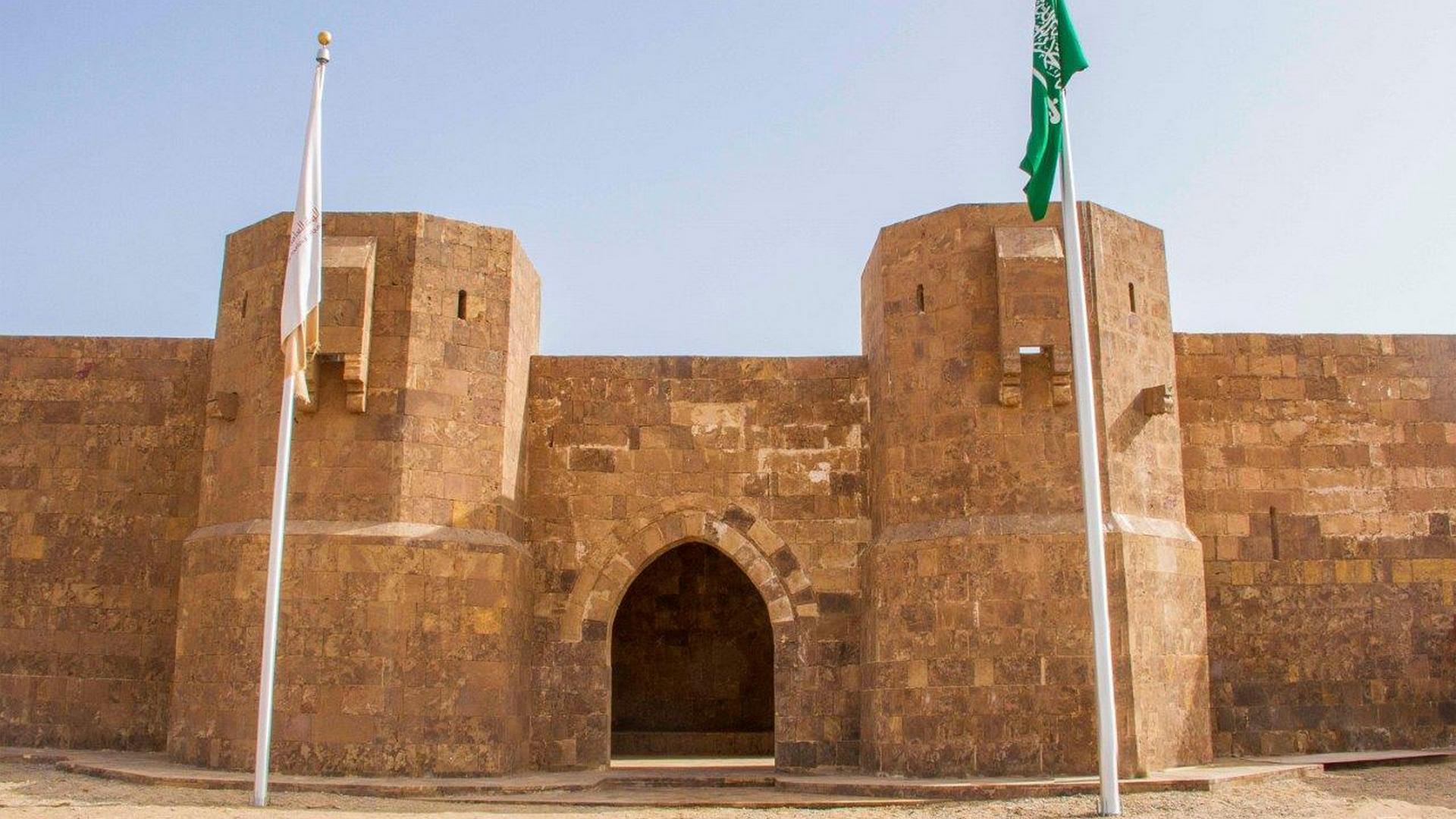Description
Property Name: Al Aznam Castle
Inventory No: –
Date of infill of the inventory form: 2020
Country (State party): Saudi Arabia
Province: –
Town: Tabuk
Geographic coordinates: 27° 2’22.97″ N 36° 1’10.29″ E
Historic Period: 13rd century
Year of Construction: Unknown
Style: Mamluk
Original Use: Fortress
Current Use: Museum
Architect: Unknown
Significance
It is located 40 km south of the city of Duba, and it is known at the present time as Al-Aznim, and it is mentioned in the sources by the name Al-Azm, which is the correct name for the place, and Al-Azal is an important station on the Egyptian coastal pilgrimage route, and a castle was built in it during the era of the Mamluk Sultan Muhammad bin Qalawun, then it was renewed During the reign of the Mamluk Sultan Qansuh al-Ghawri in the year 916 AH by Khashqadam al-Khazen, as indicated by an inscription that was installed on the front of the entrance, then removed from its place and lost, and the Al-Azal Citadel has a square shape, the length of its side from the outside is 90/39 m, and the height of its walls is 7 m on average It was topped by stone balconies, and the castle was built of trimmed limestone and had an entrance opening on its northeast side leading to a courtyard onto which all the internal units consisting of rooms on the northwest and southeast ribs were opened, covered with semicircular vaults,and a large iwan consisting of three pews and roofed with vaults Intersecting on the southwestern side, the castle has four towers formed on the inside of two levels: the floor is roofed with a shallow dome, and the upper one has an octagonal shape. Al-Azlem Castle is crumbling at the present time, and next to it there were two wells folded and they were buried at the present time.
Selection Criteria
ii. to exhibit an important interchange of human values, over a span of time or within a cultural area of the world, on developments in architecture or technology, monumental arts, town-planning or landscape design
iii. to bear a unique or at least exceptional testimony to a cultural tradition or to a civilization which is living or which has disappeared
State of Preservation
Well preserved
References
Commission of Tourism and Heritage


